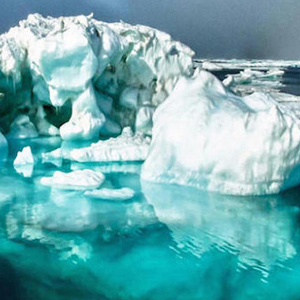|
New study: learning about climate change and ice sheet melting from ocean sediments 
National Science Foundation Posted October 29, 2020 About 18,000 years ago the world’s carbon dioxide levels increased leading to melting of ice sheets. NSF funded scientists have just published a new study on the melting of the now-extinct Cordilleran ice sheet during this period, to try to give us insight into what might happen to the Greenland and West Antarctic ice sheets in the face of current climate change. These ice sheet melting - or “siku” - events (named after the Inupiat/Inuit word for ice) cause stony rumble and sediments to rafted out to sea by icebergs breaking off the melting ice shelves. It was deposition of these sediments, dropped by melting icebergs in the Gulf of Alaska, that the scientists studied. They found that the melting of the Cordilleran ice sheet, and its flow into the Pacific, preceded melting of other ice sheets flowing into the North Atlantic by nearly 1.5 thousand years. This surprised the scientists as the assumption has been that warming of the North Atlantic would have had the biggest influence of melting ice sheets, warming, and melting those first. A summary of the article can be found at https://bit.ly/35MHMtB
|



For USAP Participants |
For The Public |
For Researchers and EducatorsContact UsU.S. National Science FoundationOffice of Polar Programs Geosciences Directorate 2415 Eisenhower Avenue, Suite W7100 Alexandria, VA 22314 Sign up for the NSF Office of Polar Programs newsletter and events. Feedback Form |

